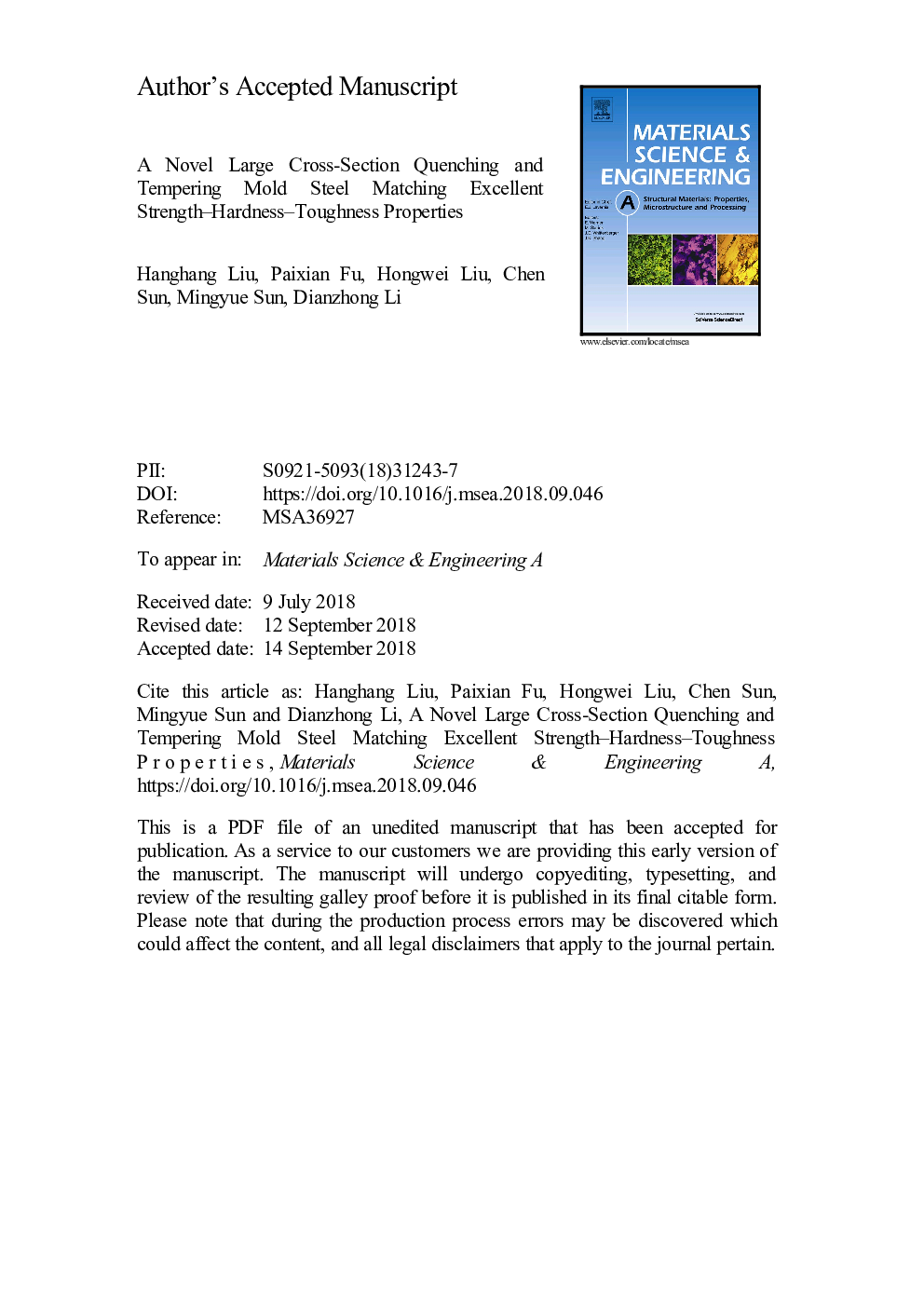| Article ID | Journal | Published Year | Pages | File Type |
|---|---|---|---|---|
| 11263577 | Materials Science and Engineering: A | 2018 | 26 Pages |
Abstract
According to the synergistic effect of multiple elements, a novel large cross-section pre-hardened mold steel is designed with higher strength and hardness as well as toughness (HSTPM steel) compared with industrial high-end 718H steel during the normal tempering temperature range (530-650â¯Â°C). The achievements on the strength and hardness of HSTPM steel are attributed to the effects of 0.5â¯wt% molybdenum (Mo) and 0.1â¯wt% vanadium (V) additions on the matrix structure, including misorientation gradient, dislocation density, and nano-sized precipitates. The main strengthening precipitate (V, Mo)C was finely characterized by high angle annular dark field-scanning transmission electron microscope (HADDF-STEM) analysis. In addition, it was found that rare earth (RE) additions of 0.015â¯wt% in HSTPM steel highly effective in refining inclusions for changing the morphologies of strip MnS and Al2O3 to tiny spherical RE2O2S, and the number of coarse inclusions (diameter exceeding 5â¯Âµm) is significantly decreased in the same statistical volume (4.69â¯Ãâ¯108 μm3) by three-dimensional X-ray microtomography statistical technique. The purification of molten steel and modification of inclusions by RE treatment are responsible for the improvement of impact toughness. Simultaneously, the lower carbon (C) content in HSTPM steel (high-end 718â¯H, 0.34â¯wt%; HSTPM, 0.23â¯wt%) also plays a large role in improving impact toughness. Finally, the synergistic effect of multiple elements delayed and eventually reduced the transformation range in pearlite compared with that in 718H steel.
Keywords
Related Topics
Physical Sciences and Engineering
Materials Science
Materials Science (General)
Authors
Hanghang Liu, Paixian Fu, Hongwei Liu, Chen Sun, Mingyue Sun, Dianzhong Li,
